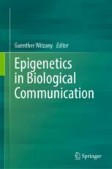Search
Search Results
-
Analysis of 5-Carboxylcytosine Distribution Using DNA Immunoprecipitation
DNA methylation (5-methylcytosine, 5mC) is involved in regulation of a wide range of biological processes. TET proteins can oxidize 5mC to...
-
LINE-1 transcription in round spermatids is associated with accretion of 5-carboxylcytosine in their open reading frames
Chromatin of male and female gametes undergoes a number of reprogramming events during the transition from germ cell to embryonic developmental...

-
Immunohistochemical Detection of 5-Hydroxymethylcytosine and 5-Carboxylcytosine in Sections of Zebrafish Embryos
5-methylcytosine (5mC) is an epigenetic modification to DNA which modulates transcription. 5mC can be sequentially oxidized to...
-
Modified Forms of Cytosine in Eukaryotes: DNA (De)methylation and Beyond
5-Methylcytosine (5mC) is an epigenetic mark known to contribute to the regulation of gene expression in a wide range of biological systems. Ten...
-
Immunochemical Detection of Modified Species of Cytosine in Plant Tissues
Methylated cytosine (5-methylcytosine) is the most studied epigenetic mark involved in the regulation of gene expression. Although it displays highly...
-
Detection of Low-Abundance DNA Modifications Using Signal Amplification-Based Immunocytochemistry
Immunocytochemistry can be instrumental in assessing the spatial distribution and relative levels of epigenetic modifications. Although conventional...
-
Analyzing DNA-Immunoprecipitation Sequencing Data
Genome-wide profiling of DNA modifications has advanced our understanding of epigenetics in mammalian biology. Whereas several different methods for...
-
Purification of TET Proteins
The 5-methylcytosine (5mC) oxidation pathway mediated by TET proteins involves step-wise oxidation of 5mC to 5-hydroxymethylcytosine (5hmC),...
-
Mechanisms that regulate the activities of TET proteins
The ten–eleven translocation (TET) family of dioxygenases consists of three members, TET1, TET2, and TET3. All three TET enzymes have Fe +2 and...

-
Recent Advances on DNA Base Flip**: A General Mechanism for Writing, Reading, and Erasing DNA Modifications
The modification of DNA bases is a classic hallmark of epigenetics. Four forms of modified cytosine—5-methylcytosine, 5-hydroxymethylcytosine,...
-
Structure and Function of TET Enzymes
Mammalian DNA methylation mainly occurs at the carbon-C5 position of cytosine (5mC). TET enzymes were discovered to successively oxidize 5mC to...
-
Map** epigenetic modifications by sequencing technologies
The “epigenetics” concept was first described in 1942. Thus far, chemical modifications on histones, DNA, and RNA have emerged as three important...

-
High-Resolution Analysis of 5-Hydroxymethylcytosine by TET-Assisted Bisulfite Sequencing
DNA cytosine modification is an important epigenetic mechanism that serves critical functions in a variety of biological processes in development and...
-
The Human Epigenome
The output of the genome is controlled by the interaction of transcription factors with the epigenome. Epigenetic processes such as DNA methylation,...
-
Evolution and Diversity of DNA Methylation in Eukaryotes
DNA methylation (DNAm) is an important and well characterized epigenetic process which regulates gene expression, plays a vital role in embryonic...
-
Immunochemical Detection of Modified Cytosine Species in Mammalian Preimplantation Embryos
DNA methylation undergoes dynamic changes at the genome-wide scale during the early steps of mammalian embryo development. Immunochemical detection...
-
Roles of TET and TDG in DNA demethylation in proliferating and non-proliferating immune cells
BackgroundTET enzymes mediate DNA demethylation by oxidizing 5-methylcytosine (5mC) in DNA to 5-hydroxymethylcytosine (5hmC), 5-formylcytosine (5fC),...

-
DNA Methylation Analysis of Cnr1 Gene Promoter
DNA methylation pattern could be considered a biomarker to be exploited for the study and management of several human diseases. In this chapter,...
-
Design and Application of DNA Modification-Specific Transcription-Activator-Like Effectors
Transcription-activator like effectors (TALEs) are DNA-binding proteins used for genome targeting. TALEs contain a central domain of concatenated...
